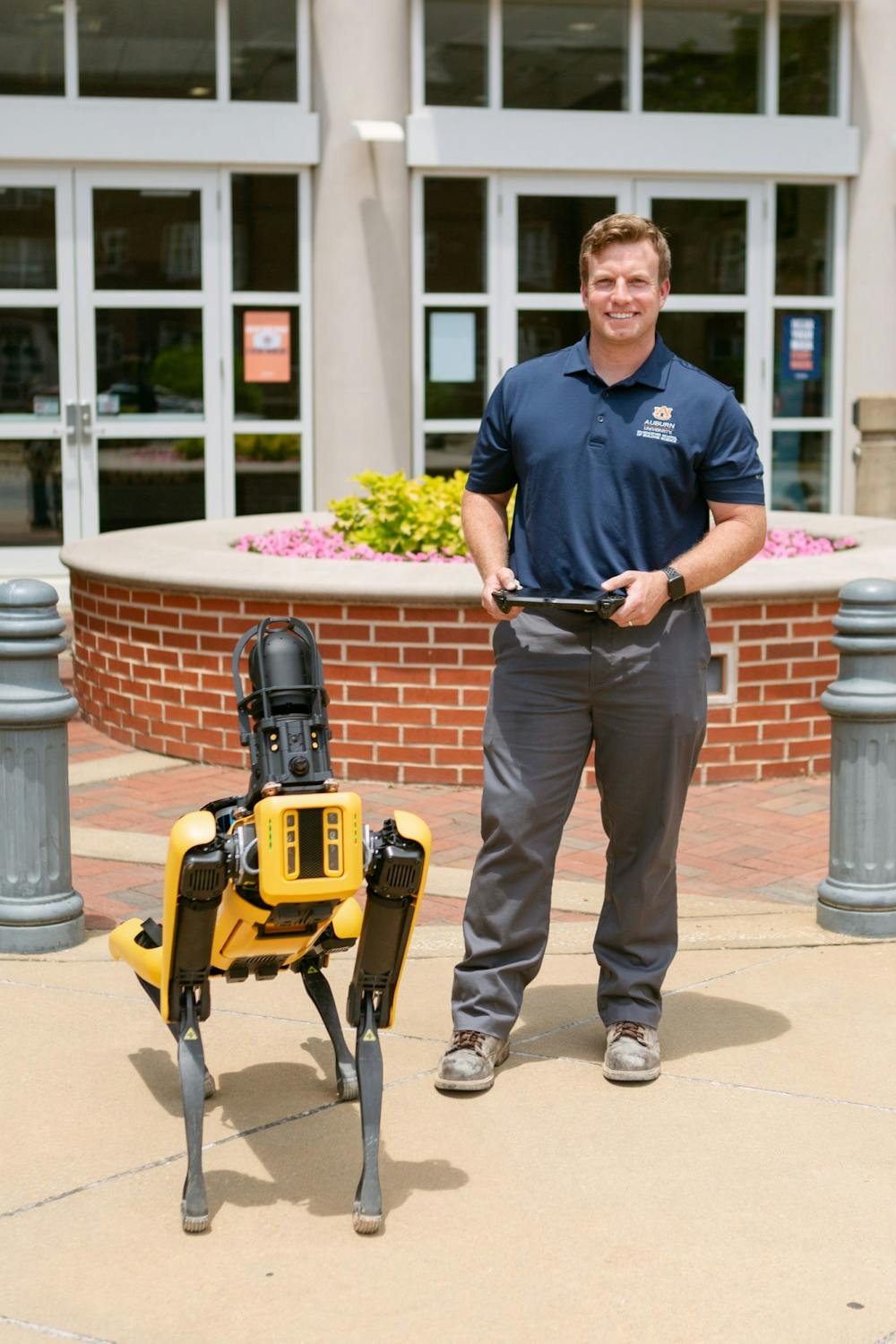Mac, the Boston Dynamics spot, is the McWhorter School of Building Science’s latest acquisition in novel construction robotics.
Named after Earlon McWhorter, Mac serves as a mobility platform.
He has four legs and can be either semi or fully autonomous according to Eric Wetzel, assistant professor at the McWhorter School of Building Science.
This autonomy means Mac can be sent out to construction sites to collect data with payloads on its back without the need of human intervention.
Weighing in at around 80 pounds, Mac stands 3 feet tall, a height and weight that vary depending on payloads and how high Mac is walking.
“For the school of building science, our interest is: how do we take Mac and other robots in construction and utilize them on job sites,” Wetzel said.
As far as Mac's features, Wetzel said it has a pan head zoom camera, a 360 degree camera and a laser scanner.
Each tool can be put on Mac’s back in order for him to autonomously go to a construction site to capture data and perform laser scans. Mac manages these tasks and then sends the information back.
“We have to put it in autonomous mode and set an initial training session and then from there it can execute that training as many times as we need it consecutively on a daily, weekly or monthly basis,” Wetzel said.
Because of Mac’s features, research has started looking at the quality of the aforementioned scans as well as the reliability of the robot on a construction site, Wetzel said. Due to this ever-changing environment, Mac must operate under different conditions and be able to adapt depending.
“Mac is a little bit shorter than most scanning equipment, so how is that affecting the quality and results of scans?" Wetzel said. "Much of the research is looking at what is the likelihood that Mac could replace some of the requirements on a field engineer or project to collect that data."
Being able to send the robot out autonomously would alleviate some of the burdens from the individuals responsible for data on job sites, he said.
“There is a whole social science behind this too," Wetzel said. "What do people think about it? What does the management think? How reliable is collision detection on the robot?”
Not only is Mac being used for extensive research, but he is also utilized as a learning tool in the classroom.
Sarah Scott, senior in building science, said Mac is occasionally brought into the classroom to teach them more about the latest technology in the field.
“It’s definitely a great tool to use in the industry, just to help get a better idea of how the construction site works and looks,” Scott said.
Wetzel elaborated on this saying that in terms of teaching, Mac is a “tangible representation” of the tech used in construction.
The School of Building Science keeps a focus on software and hardware use.
Offering classes on drones as well as construction, information and technology classes, the McWhorter School of Building Science focuses on educating students on the technology of tomorrow.
“It’s our responsibility as faculty members and as a school to always stay on that cutting edge to show the students what’s coming down the road and that’s really what we’re doing with a lot of this technology,” Wetzel said.
Finally, Mac is used as an outreach and recruiting tool.
“If I can get students excited about construction or robotics or STEM then that’s a perfect way to introduce students to the construction industry and the robotics [or] the more technical side,” Wetzel said. “There’s a perception that construction is only shovels and hard hats, but there’s an immense amount of technology that goes into it.”
Do you like this story? The Plainsman doesn't accept money from tuition or student fees, and we don't charge a subscription fee. But you can donate to support The Plainsman.






